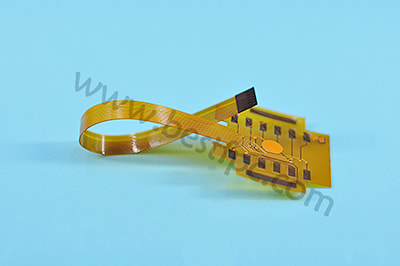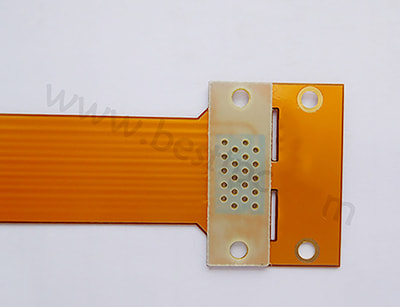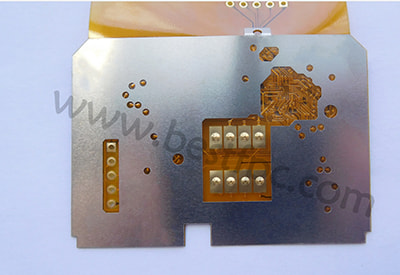The biggest feature of FPC is its soft and flexible structure. But due to its soft structure, when connecting a small part such as a connector to an FPC, we need to place a reinforcing plate to intensify some certain areas of the flexible printed circuit board so that it can be easier to add or solder interconnects or components to the stiffer part. And the reinforcing plate is what we call stiffener.
Functions of a stiffener
- To strengthen areas of the board;
- To support some interconnects or components;
- To keep certain areas flat and stable;
- To constrain the flexible parts to specified areas.
3 common types of stiffeners
There are 3 main types of stiffeners - Polyamide (PI) stiffener, FR4 stiffener, and stainless steel stiffener. And we will give a brief introduction to all of them.
PI stiffener—With high precision and high temperature resistance, the tolerance it can allow is +/- 0.03mm. Also, PI stiffener is generally used to increase the thickness of the ZIF connector and to give the gold finger a finer touch and full support.

FR4 stiffener—Generally, there are some holes on the FR4 stiffener. And the location of the holes will fit with the holes of the FPC for a better alignment. By the way, it can also strengthen the fastness of the plug-in materials.

Stainless steel stiffener—It is generally used for flexible circuit designs requiring anti-corrosion resistance, capability, robustness, and formability. But the process will be more complicated, and it costs more.

To sum up, a stiffener, which is the common method of strengthening a FPC, is used to facilitate the subsequent soldering and overall assembly and to give the board enough support to stand the components during assembly. Also, there are three main types of stiffener materials, including PI, FR4 and stainless steel.
So, this is the end of the article. In case if you have any other questions about stiffener or FPC, you are welcome to contact us via email at sales@www.bestfpcs.com. We are fully equipped to handle your FPC manufacturing requirements.
This literature references the"Bestfpcs-blog"










 2023-02-21
2023-02-21
 BEST
BEST

.png)
.png)
.png)
.png)

.png)

